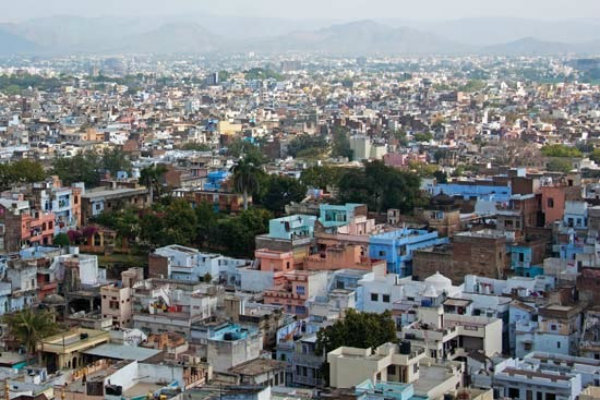Introduction
- A cluster of dwellings of any type and size where human beings live is known as human settlement.

- On the basis of size and type, patterns of human settlement are studied; hence, a settlement could be very small (e.g. hamlet) and could be very large (e.g. metropolitan city).
- The sparsely populated settlement whose main occupation is agricultural and other primary sector activities, is known as village.
- Large and densely populated settlement whose main occupational specialization is in tertiary activities is known as urban settlement.
Patterns of Settlement
The pattern of human settlement is practically influenced by −
- Physical features (e.g. relief feature, climate, and availability of water);
- Cultural and ethnic factors (e.g. social structure, caste, and religion);
- Security factors (e.g. defence against thefts, robberies, etc.).
Categories of Settlement
- Based on above discussed factors, human settlement is categorized as −
- Clustered,
- Agglomerated or nucleated,
- Semi-clustered or fragmented,
- Hamleted, and
- Dispersed or isolated.
- The settlement in which the houses are closely built up and compact is known as clustered settlement. The shape of clustered settlement normally varies from rectangular, radial, to linear.
- Clustered settlement in India normally found in fertile alluvial plains and in the northeastern states.
- The settlement, clustering in a restricted area of dispersed settlement normally looks like semi-clustered. Examples of such settlement can be seen in Gujarat plain and some parts of Rajasthan.
- Some settlement is fragmented into several units and physically separated from each other is known as hamleted settlement. Examples of hamleted settlement can be seen in the middle and lower Ganga plain, Chhattisgarh and lower valleys of the Himalayas.
- The isolated settlement is known as dispersed settlement. Examples of such settlement can be seen in parts of Meghalaya, Uttaranchal, Himachal Pradesh and Kerala have this type of settlement.
Types of Urban Settlement
- Like rural settlement, urban settlements have also been developed during the ancient period itself.
- Based on Time, Location, and Function, Urban Settlement is categorized as −
- Ancient City
- Medieval City
- Modern City
- Administrative City/Town
- Industrial City
- Transport City
- Commercial City
- Mining City
- Cantonment City
- Educational City
- Religious City
- Tourists’ City
- Varanasi, Prayag (Allahabad), Pataliputra (Patna), Madurai, etc. are the examples of ancient city.
- Delhi, Hyderabad, Jaipur, Lucknow, Agra, Nagpur, etc. are the examples of medieval city.
- Surat, Daman, Panaji, Pondicherry, etc. are the examples of modern city.
- Chandigarh, Bhubaneswar, Gandhinagar, Dispur, etc. are the cities developed after the independence of India.
- Ghaziabad, Rohtak, Gurgaon, etc. are the satellite towns that have been developed around Delhi.
- The town or cities performing administrative works are categorized as administrative towns/cities. For example, the national capital (New Delhi) and the capital of all states and Union Territories are the administrative towns/cities.
- The towns/cities that developed because of the industrial development are known as industrial towns/cities. For example, Mumbai, Salem, Coimbatore, Modinagar, Jamshedpur, Hugli, Bhilai, etc.
- The towns/cities primarily engaged in export and import activities are known as transport towns/cities. For example, Kandla, Kochchi, Kozhikode, Vishakhapatnam, etc.
- The towns/cities primarily engaged in trade and business are known as commercial towns. For example, Kolkata, Saharanpur, Satna, etc.
- The towns that developed because of the mining activities are known as mining towns. For example, Raniganj, Jharia, Digboi, Ankaleshwar, Singrauli, etc.
- The towns that developed as garrison towns are known as Garrison Cantonment towns. For example, Ambala, Jalandhar, Mhow, Babina, Udhampur, etc.
- The towns that developed because of the development of educational institutions are known as educational towns. For example, Roorkee, Varanasi, Aligarh, Pilani, Allahabad etc.
- Some towns mark their development with the existence of religious shrines. Such towns are known as religious towns. For example, Varanasi, Mathura, Amritsar, Madurai, Puri, Ajmer, Pushkar, Tirupati, Kurukshetra, Haridwar, Ujjain, etc.
- The towns that developed because of the influx of tourists are known as tourists’ towns. For example, Nainital, Mussoorie, Shimla, Pachmarhi, Jodhpur, Jaisalmer, Udagamandalam (Ooty), Mount Abu, etc.
Modern Indian Cities
- Based on the population size, the census of India classifies urban centers into six classes (see the table given below).
| S.No. | Classes & Population |
|---|---|
| 1 |
Class I
100,000 and above
|
| 2 |
Class II
50,000 to 99,999
|
| 3 |
Class III
20,000 to 49,999
|
| 4 |
Class IV
10,000 to 19,999
|
| 5 |
Class V
5,000 to 9,999
|
| 6 |
Class VI
less than 5000
|
- The cities with population beyond five million are known as mega cities.
- Urban agglomeration forms in a situation when a town and its adjoining urban areas outgrowth, or two or more contiguous towns with or without their outgrowth, or a city and one or more adjoining towns with their outgrowth together forming a contiguous spread.
- More than 60 per cent of urban population in India lives in Class I towns.
- Out of total 423 cities, 35 cities/urban agglomerations are metropolitan cities and six of them are mega cities.

No comments:
Post a Comment